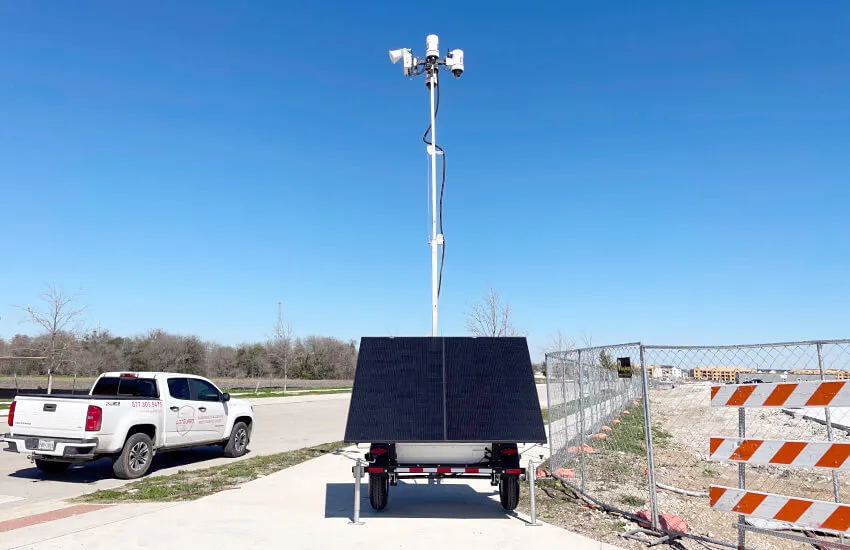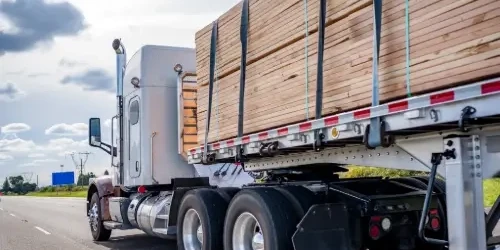Regulatory compliance in US construction has dramatically changed, and filing paperwork after an inspection is no longer enough. Today, agencies like OSHA and the EPA expect continuous monitoring, automated reporting, and digital audit trails as the baseline for every jobsite.
This shift puts IT managers in a challenging position. Manual reporting creates gaps that regulators no longer tolerate. Yet there's a significant opportunity here. Automated compliance tools can turn a traditionally reactive process into a source of strategic value.
Real-time monitoring and verifiable documentation help IT leaders keep projects compliant while proving their worth to executives. Automated compliance is fast becoming the regulatory standard, and the companies that get ahead now will set the pace for the entire industry.
Why US Construction Compliance is Moving Toward Automation
Compliance in construction used to mean paperwork, clipboards, and a scramble when inspectors showed up, but regulators now expect something very different.
Regulatory shift
OSHA is steering away from periodic inspections and leaning heavily into continuous oversight. The EPA has taken a similar path, setting requirements for environmental data that can be tracked and transmitted in real-time.
Several states have raised the bar even further. California’s CPRA and Texas’s TDPSA are just two examples where digital-first reporting is no longer optional. Insurers, too, are setting conditions for coverage, which nearly always include automated compliance trails that prove worksite safety and environmental accountability.
Manual compliance failures
Documentation gaps account for a large portion of compliance failures across the US construction industry. Incomplete reports often lead to heavy fines, and even when penalties are avoided, the time spent piecing together paperwork drains staff resources.
A single overlooked log entry or misfiled safety report can unravel months of work. Human error becomes inevitable when compliance depends on handwritten notes and fragmented spreadsheets. For more details on why traditional approaches often fall short, see our comprehensive guide to construction jobsite security.
Industry evolution
The construction industry itself is moving on. Large contractors have already embraced automated compliance platforms, and their influence is shaping what regulators expect. Audit processes are becoming digital-first, with agencies requesting electronic logs before even setting foot on a jobsite.
Construction technology as a whole is shifting toward integration, and compliance tools are following suit. Those who wait risk being left behind, while companies that adopt automated systems early gain a clear edge in bidding and reputation.
Compliance categories
Automation now touches every area of compliance. Environmental monitoring covers air quality, noise levels, and emissions. Safety compliance tools include smart detection of PPE use and real-time incident tracking. Security demands auditable records of access control and mobile surveillance on construction jobsites.
Even equipment maintenance and inspection logs are moving into automated systems, eliminating errors typical of paper-based tracking.
4 Ways Automated Compliance Systems Transform Construction Operations
Automation closes gaps that manual systems leave open. For IT leaders, the right platform can change how the entire jobsite operates.
1. Real-time monitoring eliminates compliance gaps
Jobsites are unpredictable. Dust, noise, and emissions don’t wait for inspections. With automated environmental sensors, those readings are captured continuously, creating a live record that’s ready when regulators ask.
Safety gets the same treatment. Smart detection technology can flag when PPE is missing, so risks are addressed instantly instead of days later when someone reviews footage.
Equipment monitoring adds another layer, sending predictive maintenance alerts before a machine becomes unsafe. And with 24/7 mobile surveillance and jobsite security and automated incident logs, compliance documentation builds itself in the background. For IT managers, that means fewer blind spots and far fewer surprises when audits roll around.
2. Automated reporting reduces audit stress
Audits are tough when reports need to be cobbled together from spreadsheets, emails, and handwritten notes. Automation changes that. Every event, whether a safety incident or an environmental reading, is time-stamped and stored in tamper-proof logs.
Exportable reports can be generated instantly, aligned to OSHA, EPA, or state-specific formats. No more reformatting data at the last minute. No more scrambling to prove compliance after the fact. Instead, IT teams show regulators a ready-made audit trail that demonstrates they’re ahead of the curve.
3. Automations eliminate vendor management overhead
Most IT managers know the frustration of managing multiple vendors all too well: one for surveillance, one for safety, and another for environmental monitoring. Each system has its own dashboard, reporting structure, and support line. It’s inefficient, and easy for data to fall through the cracks.
Automated platforms consolidate those tools into a single system. Compliance data lives in one place, managed through unified access control and consistent reporting. That means fewer integrations to manage, fewer support calls to chase, and a lighter lift for IT teams overall. What once took three vendors and three systems can be handled with one.
4. Executive dashboards demonstrate IT's strategic value
Perhaps the most overlooked advantage of automation is visibility at the top. With executive dashboards, leadership can see compliance status across all jobsites in real-time.
That visibility translates into something IT managers rarely get credit for: business impact. Dashboards highlight cost avoidance from prevented violations, document reduced risks for insurance providers, and even calculate ROI from lower manual workloads.
Instead of compliance being seen as a drain on resources, IT leaders can point to clear evidence that their strategies are protecting margins and creating measurable value for the business.

How Stellifii Delivers Automated Construction Compliance
Stellifii brings WCCTV’s hardware, analytics, and monitoring tools together into one connected platform, giving IT managers exactly what they need: visibility, control, and confidence that compliance is covered.
Comprehensive monitoring integration
Stellifii unifies multiple monitoring systems that often sit in silos. Smart detection systems use AI to spot safety and security risks instantly, logging every event with time-stamped video. Environmental monitoring tools track air quality, noise, and emissions in real-time, generating data that can stand up to any regulatory review.
On jobsites without fixed infrastructure, mobile surveillance trailers extend compliance coverage where it’s needed most, while pole cameras offer another option for projects that require a more fixed setup. Both can support long-term operations, giving teams complete flexibility and continuous visibility across every site. With Stellifii as the hub, every device contributes to one complete compliance record.
Automated compliance features
Stellifii goes beyond data collection, providing pre-built reporting templates aligned to OSHA, EPA, and state-specific rules, so documentation is ready to share the moment it’s requested. Every data point is time-stamped, locked against tampering, and paired with automated threshold alerts that identify potential risks before they escalate.
Compliance reports can be exported instantly, transforming what was once a stressful, manual process into a routine and reliable part of operations.
Executive-ready insight
What sets Stellifii apart is how clearly it communicates compliance performance to leadership. Dashboards show every jobsite's live status so executives don’t have to wait for updates or sift through spreadsheets. System diagnostics add another layer, highlighting issues like signal strength or device health before they cause downtime.
For IT leaders, these tools demonstrate value beyond basic compliance management. They show that compliance is being managed proactively, risks are well under control, and fewer resources are being wasted on manual oversight.
Integrated platform benefits
Stellifii also lightens the operational load. With single sign-on and a unified data structure, IT teams no longer manage fragmented systems or multiple vendors. Procurement is simplified, support comes from one partner, and scaling across multiple jobsites is straightforward.
The platform’s cloud architecture supports rapid deployment and multi-site oversight without adding complexity to the IT stack. For managers tasked with balancing compliance, security, and infrastructure, this means the difference between constantly reacting and finally getting ahead.
Stay Ahead of Construction Compliance Expectations with WCCTV
Regulations aren’t slowing down, and neither is the pressure on IT leaders in construction. From OSHA’s real-time requirements to insurers demanding digital audit trails, compliance is now a must. Manual processes can’t keep pace, but Stellifii can.
Stellifii consolidates your entire compliance and security infrastructure into one platform, eliminating the scramble when auditors arrive. Leadership teams get real-time dashboards showing both compliance status and site security across every jobsite, while IT teams gain back valuable time to focus on strategy instead of manual oversight.




